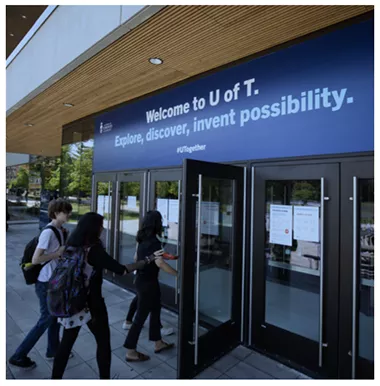This Strategic Framework is also available as a downloadable PDF.

UTM’s Strategic Framework is open-ended rather than time-bound.
This open-endedness reflects, first, the strength of our position. UTM already benefits from lots of plans structured on concrete timelines. Our Sustainability Plan and Campaign Plan each have a ten-year horizon; our Site Plan extends over fifteen years; a new Academic Plan will soon set objectives for the next five years; and we have other plans for research, external relations, and student support underway. This foundation helps our Framework take a different approach, one focused on the enduring values that these other plans will continue to share.
The open timeline also reflects the process of creating the Framework itself, which involved hundreds of conversations and taught UTM a lesson to carry forward: we need pre-determined plans, but we also need something more. We need a way to evaluate—and adapt and re-shape and improve— our plans as new contexts emerge. That’s the Framework: it provides UTM’s guide to continuous planning, setting the priorities around which new projects will evolve, on an ongoing basis in any year.
The Framework’s openness matches, too, the scope of this campus’ ambition. To practice pedagogies of kindness and lead impactful research discoveries; to care for this land and champion anti- racism; to form reciprocal partnerships and effect reconciliation with Indigenous peoples—these goals will outlast any one-, three-, and five-year deliverables. And they’ll be realized in ways we haven’t yet imagined, through new collaborations and new plans. The Framework makes room for these new opportunities to emerge, rooted in priorities that matter most to our community.
These priorities matter because they represent responsibilities entrusted by our place: in the Peel Region, in the University of Toronto system, next to the trusting creek. And they matter because they imagine a better future for the students, colleagues, and communities to whom that future belongs. So, the Framework remains unbound, finally, because our pursuit of this future won’t end.
